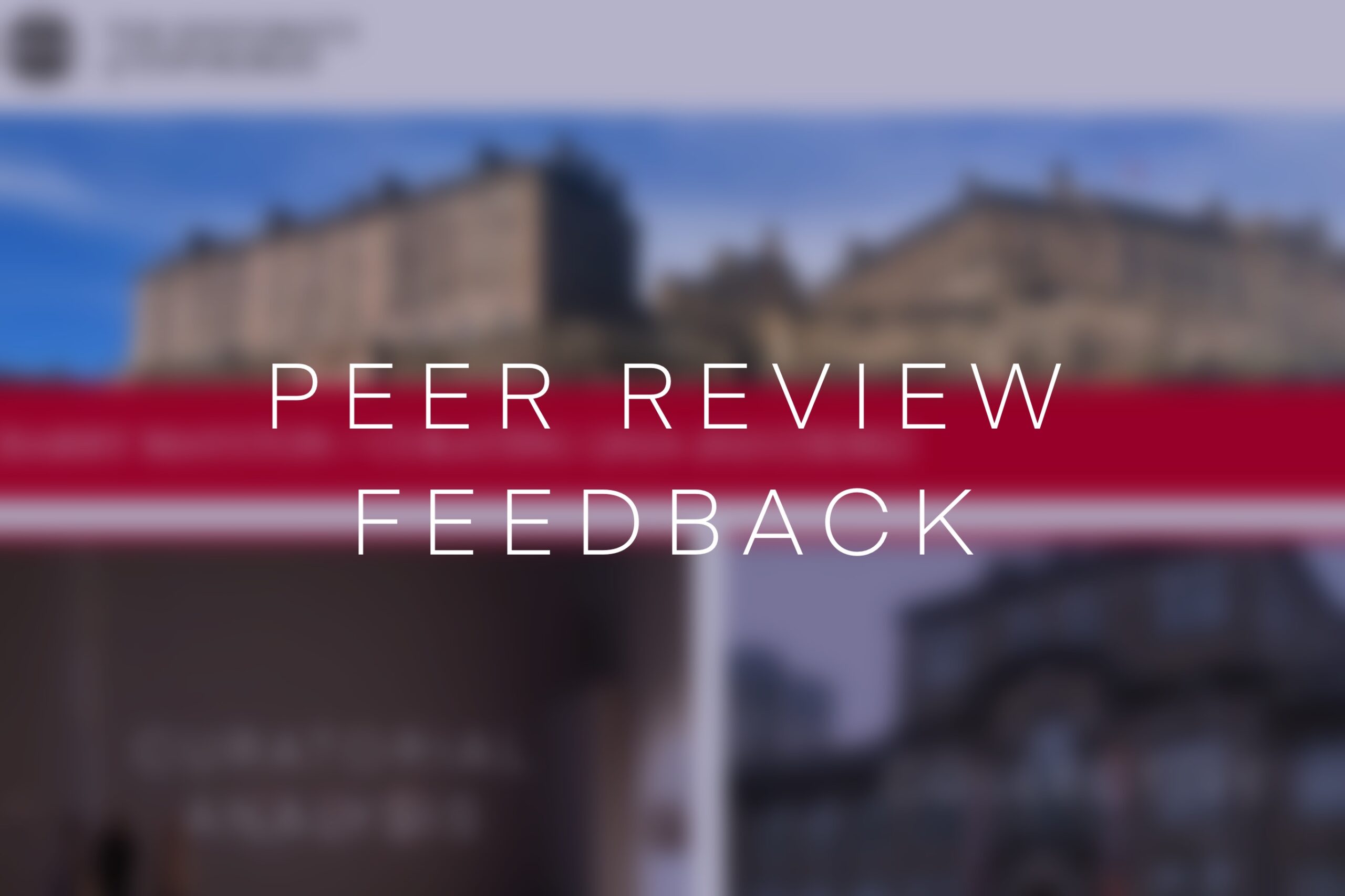Week 6: Peer Feedback

Please note that this Post is out of chronological order and was completed during the flexible learning week.
Prior to the week 6 class on the 26th of February, we were instructed to write 2 pieces of peer feedback for other individuals in our collective. I was assigned Xi Sun and Tianyue Hao. I shall provide some context for their curatorial projects, followed by a copy of what I posted as a comment on their individual curatorial blog. This feedback was informed by an attentiveness to the learning objectives, the blog toolkit, and the format that previous tutor feedback has taken.
Xi Sun:
Contextual Information:
Xi is focusing on the concept of a collective and social memory through a focus on digital and virtual technologies, responding to emerging forms of information storage as having a historiographical precedent in determining what events are remembered by a culture. I found this to be an interesting concept with current importance as society becomes more reliant on technology within everyday lives, along with a theoretical relevance that is reflected with references to Elwood et al.’s article Technology, Memory, and Collective Knowledge (2014). Additionally, this also may relate to emerging philosophies of the mind in a broader sense, such as Andy Clark and David Chalmer’s Theory of Extended Cognition, where technology becomes an out-of-brain site for extended memory (I did not include this point in my comment due to word limit restrictions, selecting other items that I found more important, but I still think It demonstrates the contemporary relevance of this topic and can be recommended to Xi at a later date).
Posted Comment on Blog:
Firstly, I think that your posts are very well laid out and arranged, with the use of headings, subheadings, and different colours to highlight key terms, making it easy to navigate through each of your posts. Additionally, I like that you have a clear curatorial outline that you updated throughout blog posts. This gives me a clear understanding of what your practice is about. I think you could continue to update how each area of research influences the development of your project, as this will engage LO3 reflections. Additionally, I think it would be a good idea to write blog posts about some exhibitions. If you had a chance to see the Personal Accounts Exhibition at the Talbot Rice Gallery (though it has finished now), then it might be useful to reflect on how video pieces are displayed within a curatorial setting. Lastly, you mentioned the shaping of memory in your latest blog post; this reminded me of an article I recently read, Uses of the Archive in Exhibition Practices of Contemporary Art Institutions by Durukan and Akmehmet, who discuss the ways that archives ‘control memory’. The exploration of archival video pieces might be useful in developing your curatorial theme!
Tianyue Hao
Contextual Information:
Tianyue is focusing on the idea of movement and developing an exhibition surrounding the concept of capturing ephemera into physical pieces of art. She identifies sculpture as an individual moment that has been solidified into a representation of tension. Though possibly in need of further clarification, this project seems to be challenging traditional historiographical exhibition standards by uniting, what is considered to be, a more historical and mimetic sculpture with modern paintings and contemporary performances. The example artworks mentioned do not feature any contemporary artists; however, I do believe that this subject matter has contemporary pertinence. I recommended looking into the field of contemporary phenomenological drawing studies, of which the focus is on the qualities of drawing mediums as having the ability to capture a movement into a stationary representation. Additionally, the article that I mentioned, written by Freedberg and Gallese, would be especially helpful as it discusses the neurological understanding of stationary statues as frozen movement in embodied simulation. There is the chance here to maintain the use of archival sculptural work whilst inspecting it from a contemporary theoretical perspective.
Posted Comment on Blog:
Hi! I think you have done an impressive job of being critical and reflective of your own work, identifying the components of your project that you are going to carry forward in this course with an engagement with the reflexivity described in LO3. Additionally, I like that you have a concise and clear summary of the shape that your project is going to take. However, this may benefit from some further research references to situate your practice within contemporary curation, which, I think, would be helpful for fulfilling LO1 (application of theory and research) and LO2 (locating work within the expanded sphere of contemporary curation). Further, I’m especially excited about the discussion of mark-making as a trace of movement and the relation between stillness and motion. It may be useful to look at the concept of Drawing as Phenomenology, which examines the specific ways that drawing is suited to capturing the movement of the artist (the TRACEY Drawing and Visualisation and Research Journal, hosted by Loughborough University, is especially good for this subject area). Additionally, the article Motion, Emotion, and Empathy in Aesthetic Experience by Freedberg and Gallese might be helpful as it explores the way that an audience perceives the gestural artistic marks from a neurological perspective.



